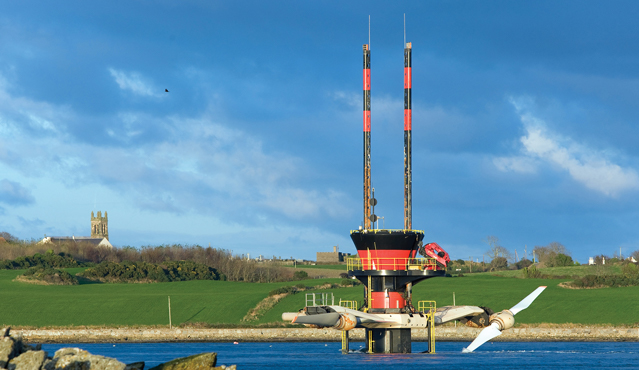Green technology

Green technology will play a significant role in the decades to come as the Executive prepares to publish its energy strategy, which will run to 2050, later this year.
In the second of its e-bulletin updates on the energy strategy’s development, the Department for the Economy said that “diversifying the technology mix” is among the key issues arising in power generation. “Most renewable energy in Northern Ireland comes from onshore wind,” the bulletin says, “and the role of other technologies, including offshore wind (fixed/floating), marine (tidal/wave) and energy storage will be considered.”
With significant grid investment likely to be needed in order to meet whatever renewable target is set — at least 70 per cent by 2030 has been mooted by Minister Diane Dodds MLA — the diversity of technology is said to be an important consideration for both capacity and security of supply. Such a diversity will be especially important due to the unsuitability of the north-eastern coast for the development of offshore wind farms.
In 2019, a department report stated the coast was unsuitable due to likely objections over how the offshore wind farms would affect the physical makeup of the area due to their proximity to the coast; this meant that Northern Ireland was excluded from the 2019 leasing round by the Crown Estate, the proprietor of the territorial waters off of the north Antrim coast.
While concrete commitments are understandably lacking before the publication of the strategy, the fourth e-bulletin, issued in September 2020, states that the Heat Working Group is considering whether or not there should be a renewable target for heat and what technologies could be of use. Examples of renewable heat technologies include renewable biofuels, solar heating, geothermal heating, heat pumps and heat exchangers.
In the fifth of the bulletins, the Department states that it will consider how technology can be used to “prevent unnecessary journeys and ensure the capability to tap into new energy uses”, through the use of tech such as smart metering, smart charging of vehicles and high-speed broadband. The sixth of the bulletins states that the new approach to energy “may mean benefiting from new and smarter ways of generating and using renewable energy and technologies”. With offshore wind out of the question for now, these technologies are most likely to be the aforementioned heat tech, solar technologies and onshore wind turbines.
Further technological possibilities are being explored through the recently announced Carbon Capture and Storage Fund, the Prime Minister’s £1 billion 10-point plan for carbon capture processes and technologies. Though no criteria for the fund have been announced yet, there are several technological possibilities for the CO2 separation stage of CCS, but thus far only one has been used on an industrial scale: carbon scrubbing with amines. For storage, the carbon would likely be subject to the process of geo-sequestration, which involves injecting it in its supercritical form into underground geological formations.
Yet more investment in green tech will be expected to come from a £250 million low carbon hydrogen production fund due in late 2021. For now, the latest of the Department’s bulletins states that the Executive plans to “aid and guide our consumers to integrate and utilise zero carbon technologies within the day-to-day home and working lifestyles”.





